|
Service
history
1937
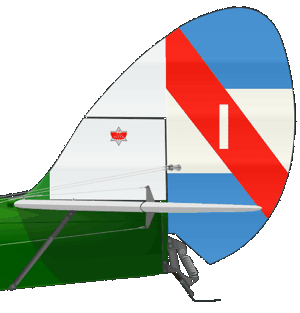 At
the end of March 1937 the first aircraft re-allocation was recorded.
After four months of repairs due to her accident and a complete
overhaul, Tiger Moth No 4 was moved to the Aeronautical Base No 1
located at the same base Aerodrome. At
the end of March 1937 the first aircraft re-allocation was recorded.
After four months of repairs due to her accident and a complete
overhaul, Tiger Moth No 4 was moved to the Aeronautical Base No 1
located at the same base Aerodrome.
In April the
second group of officers began primary training with the Tiger Moth.
On 20th of the month, No 2 suffered an accident whilst landing
during a check-flight which Major Gestido was conducting on 1st
Sergeant Efrain L. Bacardaz. Both pilots were unhurt but the
aeroplane was to spend four months under repair.
In May a new
activity began when the Tiger Moth was enrolled as a glider tug. Sgt.
Hilario Almandós with a mechanic, Corporal Soria, flew No 3 from the
EMAer to Pando Aerodrome where a Minimoa glider, “Argentina”, was
based, property of the Argentinian engineer Onésimo Bonino.
That day with
No 3, Sgt. Almandós registered three flights towing “Argentina”. The
first was to Minas where it was cast off after one hour's flying.
Later they returned to Pando where again after an hour's tow the
glider was cast off. For the third flight with the glider in tow for
45 minutes they flew to Boiso Lanza and returned to Pando where they
separated at height before landing. At the end of the day the pilot
and his mechanic returned to EMAer in a brief flight of 15 minutes.
May 18 had
been chosen by the Executive Power for the laying of the Foundation
Stone and inauguration of works on the Rio Negro hydroelectric dam.
In celebration the Army was instructed to provide an aircraft
formation to fly over the site during this most significant event.
This was composed of six Tiger Moths under the command of the EMAer
Director Major Gestido, refuelling in Durazno both on the way in and
upon return..
Cap. Isaías Sánchez
- Sgto.1º Efraín
Bacardaz
May. Oscar Gestido - Mecánico
Lemos
Sgto. Hilario
Almandós - Cbo. Hermes
Pereyra
Tte.
Erling Olsen Böje
- Cbo.
Amílcar San Román
Cap. Cecilio
Bentancur - Cbo. Nilo Zerpa
Tte. Manuel Rivas
Gómez - Sgto.1º Pedro
Ureta
|
DH82A
Squadron - Flight over the Rio Negro during the ceremony of 18/5/37.
On 15th three
Potez 25 and five DH82A Tiger Moths were sent to the city commanded
by Major Gestido flying a Stinson 1, whilst on the following day
Colonel Cesáreo Berisso arrived in his Breguet XIV.
During this
weekend, the Tiger Moths provided some 30 baptismal flights (when a
passenger flies for the first time) and on both days flew in
formation above the city, with the Potez 25s.
On Monday
18th, on the way back to Montevideo, the group made a stop in
Durazno, except for Colonel Berisso who returned via Mercedes.
|
Potez
3
Cap. Conrado Sáez
Potez
Potez
5
9
Sgto
1º Paulino Risso
Alf. Eladio Silvera
6
Cap.
Isaías Sánchez
3 Tte.
Manuel Rivas
7
Cap. Raúl Amighetti
Tte. Ramón Irazábal
9
Mec.
Alcides Luzuriaga
Alf. Mario Arenas
8
Tte.
Alcides Perdomo
Tte. Juan C. Sención
Cbo.
Amílcar San Román
Sgto. Juan Vonella
|
Men and machines at the
City of Salto centenary, 15-18/6/37
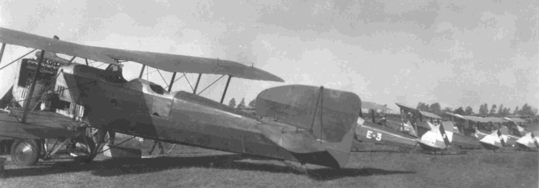
Part of the aeroplanes
sent to the Salta air festival. In the foreground the Breguet XIV (ex 4 of the
EMAv), donated to Colonel Berisso, flanked by the Tiger Moths of the EMAer.
Photo Aeronautical Museum
On June 26, the glider tows were repeated but this time with No 6,
flown by Sgt. Almandós of EMAer operating from the Military
Aerodrome Capt. Boiso Lanza. There are no records to confirm the
type of glider nor the pilot´s identity.
On July 24, in Tiger Moth
No 6, Sgt. Almandós left Pando Aerodrome in the direction of Colonia towing the
glider “Argentina”, flown by the Argentine aviator of German origin –Hans 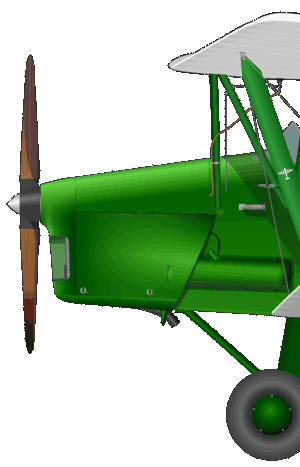 Ott.
After a towed flight of 2hr 15min he cast off over that city heading towards
Buenos Aires and after crossing the wide river he landed at Quilmes Aerodrome.
It is the first time a glider flies over the River Plate. Ott.
After a towed flight of 2hr 15min he cast off over that city heading towards
Buenos Aires and after crossing the wide river he landed at Quilmes Aerodrome.
It is the first time a glider flies over the River Plate.
On July 30, one year after
the death of Corp. Antúnez, there was a memorial service for him in Trinidad,
his native city. During the ceremony to place a plaque on his grave, the
cemetery was overflown by a section of Moths, commanded by Capt. Isaías Sánchez
with 1st Lieut Manuel Rivas Gomez in No 6, No 7 manned by 1st Sgt. Paulino Risso
and Sgt. Juan Curbelo whilst No 8 was crewed by sergeants Hilario Almandós and
Juan Vonella.
In 1937, Independence Day
celebrations were very special for the military wings. The parade on August 25
along the main avenue in Montevideo, included a Military Aeronautical Company
for the first time, whilst overhead there was a flypast of nine Potez 25, nine
Tiger Moths. Stinson Reliant SR-7B, serial No S-1 was the Command Aircraft and
formation leader flown by the Sub Director of the AM, Major Hernan Barú. The
Tiger Moth contingent was led by Major Oscar Gestido, carrying Lieut. Jr. Juan
Carvalho as an observer.
|
|
|
Avn. |
Piloto
|
|
|
| Avn. |
Piloto |
1 |
May. Oscar Gestido |
Avn. |
Piloto
|
| 4 |
Cap. Oscar Sánchez |
2 |
Tte.1º Alcides
Perdomo |
7 |
Tte.1º Manuel
Rivas Gómez |
| 5 |
Tte. Erling Olsen
Böje |
3 |
Tte.1º Ramón
Irazábal |
8 |
Sgto. Hilario
Almandós |
| 6 |
Sgto.1º Alfonso
Izarra |
|
|
9 |
Cbo. Nilo Zerpa |
|
Tiger Moth.Squadron
- Aerial
display of 25/8/37
On October 13, the first instructional night flights were recorded at the EMAer,
with Tiger Moths 5, 6, and 7, all having had landing lights installed under the
port lower wing and navigation lights on the tips of the upper wings.
Two days later military
honours at the burial of Lieut. Pablo Galarza in the main Cemetery included a
formation salute with a flypast of the nine DH82A Tiger Moths in service. It
would be the last occasion that these machines, the first nine in the fleet,
would fly together.
|
|
|
Avn. |
Piloto
|
|
|
| Avn. |
Piloto |
1 |
May.
Oscar Gestido
Alf.
Rafael Ramagli
|
Avn. |
Piloto
|
| 4 |
Cap.
Oscar Sánchez
Alf.
Hugo Torre
|
2 |
Tte.1º
Ramón Irazábal
Alf.
Mario Arenas
|
7 |
Cap.
Isaías Sánchez |
| 5 |
Tte.1º
Manuel Rivas Gómez
Alf.
Armando Mutter
|
3 |
Tte.1º
Alcides Perdomo
Alf.
Pedro Iglesias
|
8 |
Sgto.
Hilario Almandós
Sgto.1º
Efraín Bacardaz
|
| 6 |
Sgto.1º
Alfonso Izarra
Alf.
Dieter Herter
|
|
|
9 |
Cbo.
Nilo Zerpa
Cbo.
Amílcar San Roman
|
|
D.H.82A Squadron -
Honours at the burial of Gen. Pablo Galarza on 15/10/37
A few days later, on
October 26, five Tiger Moths crewed by pupils attending pilot courses for Sub
Officers and Officers were carrying out navigation tests by flying to the home
aerodrome of the Trinidad Aero Club, inaugurated only two days previously. A few
minutes after take-off on their return flight Tiger Moth No 1 lost control and
fell in the very centre of the city, catching fire and killing Corporal Amilcar
San Roman and Private Angel Peralta. Their bodies were returned to Montevideo
that same day on board the Farman F-190 piloted by Captain Isaías Sánchez.
This was the first DH82A
in the fleet to be destroyed and by a tragic coincidence, this little two-seater
accounted for the loss of three lives when the previous fatal accident at Boiso
Lanza the previous year is taken into account.
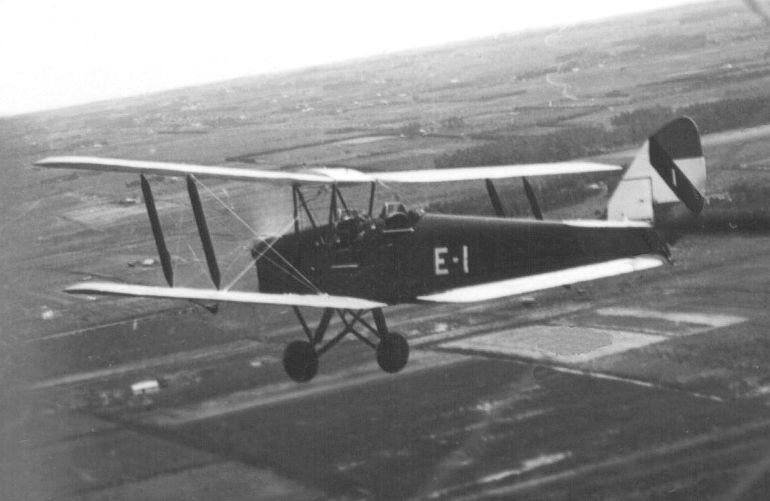
No 1 guiding the
formation on August 25. Two months later it would be lost in a fatal accident.
Photo Aeronautical Museum
At that time, nine more
Tiger Moths were received, arriving at the port in two almost simultaneous
shipments. They are erected and flight tested in the Service Division between
October 29 and November 19 and were serialled from No 10 to No18 (c/n 3612 to
3620) without the unit prefix on the fuselage. Numbers 10 to14 were assigned to
the EMAer, whilst numbers 15 and 16 went to the Aeronautical Base, leaving
numbers 17 and 18 in the Service Division. The latter four aeroplanes were used
within their units as “Couriers”, a term used at that time to define what we now
understand as liaison aircraft.
The delivery of all 18
DH82A Tiger Moths purchased from the de Havilland Company for the country's
military aviation was thus completed. Sadly as a result of the aforementioned
accident, they never all managed to be operational at the same time.
It was not by chance that
the last aircrafts to be put together were tested on November 19. On the
following day, every aeroplane in flying order was to be concentrated at the
Pando airfield, now named General Artigas Military Aerodrome, which from that
day onwards became the home of the Military School of Aeronautics.
On that historic day of
November 20, 1937 no less than 14 aircraft made their debuts, these nine new
Tiger Moths and five of the six IMAM Ro.37 bis, recently acquired in Italy.
On that day, the EMAer
presented all 17 surviving DH82As.
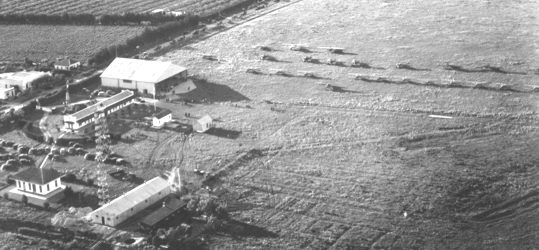
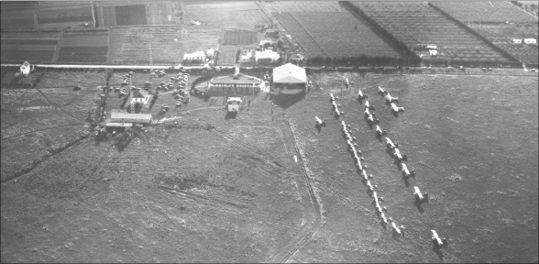
Pando, november 20th,
1937. EMAer. opening at Military Aerodrome Gral. Artigas.
Photo FAU 1955 and 1957.
|